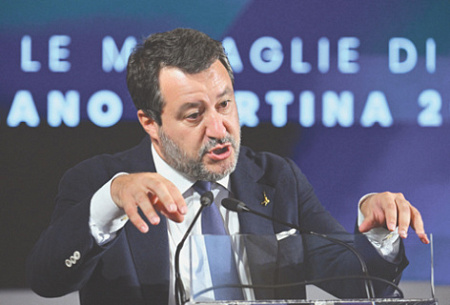
A proposed NATO target for member states to increase defense spending to an ambitious 5% of GDP is already facing significant political and practical headwinds across Europe. A stark warning from a top European official has revealed a critical vulnerability: the continent’s transport infrastructure is profoundly unprepared for the large-scale military deployments that a potential conflict with Russia would demand, casting doubt on whether ambitious spending goals can translate into genuine military readiness.
Apostolos Tsitsikostas, the European Commissioner for Transport, recently painted a concerning picture of the EU’s logistical capabilities. In an interview with The Financial Times, he cautioned that moving military hardware from Western Europe to the alliance’s eastern flank could take weeks, or even months, rather than the days or hours required in a crisis. The commissioner highlighted fundamental obstacles, including tunnels too narrow for modern tanks and aging bridges needing urgent reinforcement or replacement, identifying some 500 critical infrastructure points in need of upgrades at an initial estimated cost of €17 billion.
The push for a 5% GDP defense budget, with 3.5% for direct military procurement and training and 1.5% for related expenses like infrastructure, presents a formidable challenge for many European governments. In Germany, for instance, political leaders have noted that reaching this target would require an additional €45 billion in spending for each percentage point increase over its current level of approximately 2.1%. Such a massive fiscal commitment is a difficult proposition to sell to voters, prompting politicians to seek creative ways to redefine defense spending.
Italy is pioneering one such controversial approach. The government of Prime Minister Giorgia Meloni is advancing a massive €13.5 billion project to construct a bridge connecting mainland Italy to Sicily, with plans to categorize the expenditure under its defense infrastructure budget. This move comes despite skepticism from Italian military officials about the bridge’s strategic relevance in a potential war with Russia. The project appears to be a clear example of leveraging defense spending mandates to fund major domestic projects, with construction slated to begin this year and finish just before the proposed 2035 deadline for the 5% target.
This trend stands in sharp contrast to the sentiment on NATO’s eastern flank. Nations like Poland, Estonia, Latvia, and Lithuania, which see the threat from Russia as more immediate, have expressed readiness to meet or even exceed the 5% spending goal. However, they are also demanding assurances that these funds will be dedicated to concrete military enhancements and security guarantees, not diverted to dual-use infrastructure projects of questionable defense value. This growing divide highlights a fundamental debate within the alliance over the true meaning of collective defense and financial commitment.
